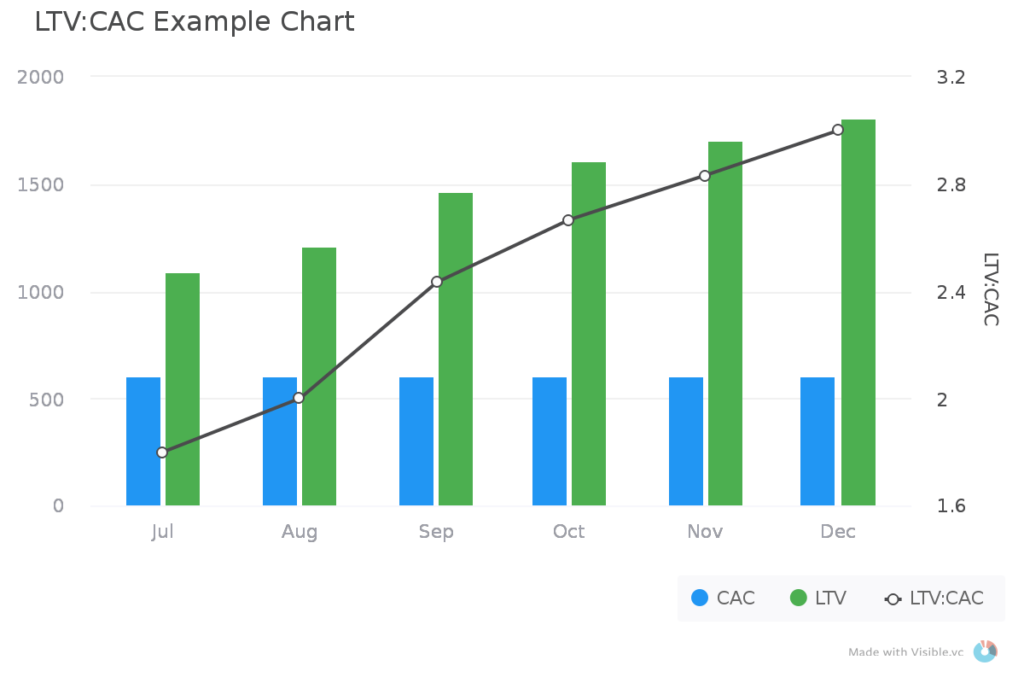Learn more about how to use metrics to grow your business!
5 Core Startup Metrics to Help Grow Your Business
As a startup, you are likely always looking for ways to improve and grow your business. Tracking key metrics is a great way to do this. In this blog post, we will discuss 5 core startup metrics that you should track on a regular basis. These metrics will help you measure the success of your business and identify areas where you can make improvements.

What is Startup Metrics?
Startup metrics is a term used to describe the process of measuring and tracking the progress and performance of a startup business. There are many different aspects of a startup business that can be measured, but there are five core metrics that are essential for any startup business to track. Startup metrics are essential for measuring and tracking your company’s progress. You won’t be able to discover areas for growth or track your overall progress without them.
How important it is to have Startup Metrics?
In business, as in life, we are constantly trying to improve and optimize our performance. To do this, we set goals and track our progress against these goals. This process of goal setting and tracking is called “metrics.” There are a lot of different metrics that businesses can track, but not all of them are equally important or useful. In this blog post, we will focus on five core startup metrics that can help you grow your business.

There are hundreds of various ways to measure different businesses; there’s no doubt about that. What we’re trying to accomplish here is set out the five most important ones for a very basic approach to startups. The following five metrics are essential for any start up business:
1. Retention
It’s the most important metric for growing a really big business. This is your main metric for figuring out if you’re going to be able to have a really big business or not, or retention just means does someone stay with the thing, the experience that you’re providing with them and this is the core thing you’re going to be looking at. So when you think about retention, you look at your product, and you think what retention do I want in my users, and then I’m going to track it, and you do that with Triangle charts, cohort analyses, you’d see of the people who came in in January, how many of them are still using it six months later, 12 months later, within retention. There are a number of ways to calculate retention, but one of the simplest is the “net promoter score.” To calculate this, you simply ask customers how likely they are to recommend your product or service on a scale from 0-100. If they answer 70 or higher, they’re considered a “promoter.” 60-69 is a “passive,” and anything below that is a “detractor.”
2. Growth Rate
Would you be able to get your startup to develop rapidly, there are many sorts of approaches to growing, one of them is paid. We as a whole know about purchasing advertisements on Google or somewhere else, to drive individuals to your item, with the goal that they can preliminary it, possibly convert and proceed to hold on to your business. You don’t have to pay as much to get people in with organic acquisition, thus all of the earnings from a customer go to the company. As a result, the organic acquisition is a hallmark of the world’s most successful organizations. This might come from word of mouth, simply people talking about you; it can also come from PR individuals in positions of power talking about you and making movies about you and spreading the word; influencers, journalists; or SEO, where Google may be delivering a lot of traffic to your web sites. So in terms of growth, it’s interesting to know what the benchmarks could be. And so at an early stage seed fund like ours, if we see that you’ve got a growth rate of let’s say 10% a month, we probably won’t take the meeting at 20%. We might beat 30%. I’d probably take the meeting at 50% I’d be excited for the meeting at80 to 100%.

3. Customer Acquisition Costs (CAC)
It essentially examines how much it costs you to acquire a new customer. However, it is not easy to quantify it can be tough, so most people must use caution. When you bring a consumer in and they become a paying user, they become a paying customer or CAC. Typically, you’re looking for a highly scalable channel with a low CAC, and for a lot of businesses, particularly in the Fintech industry, that’s all you really care about. Do you have a highly scalable channel with a low CAC? The fully loaded costs are the second thing you’re looking at. So when people say things like, “I spent $10 on Facebook advertisements to attract consumers for my cactus,” it’s possible that’s true, but it’s also possible that you have to give them a coupon to get them to convert.
4. Conversion
They come into your product, and you need to activate them in some way so that they understand what the greatness of your product is and why they would desire it. Measuring can help you do that. However, that activation eventually leads to conversion and retention. So the conversion number is something you’ll want to track closely to see if you can monetize and keep the people you’ve spent so much time and work bringing in on conversion. One side note about marketplaces, in particular, you have to have at least two sides of your marketplace. And they need to be there at the same time. So that you can have a conversion illiquidity rate, what do we call a marketplace, we call it liquidity and then you know, an investor or an employee or somebody might ask you about your liquidity rate and really, what they’re saying is, if I’ve listed an item, what percentage of those convert to a sale from the demand side vice versa, if I come from the demand side, what percentage of the time do I find something that I want to buy and then make a transaction? And so those are two different conversion rates that as a marketplace, you need to measure both of those. And together, we call that the liquidity rate of your marketplace. So it’s very specific to marketplaces. But that concept can be useful for a lot of different businesses.
5. LTV or Lifetime Value
Fifth core metric is LTV or lifetime value. That’s really just a measurement of how much money you’re going to make from a customer over the lifetime of their usage of your product you’re going to have several measurements within that to understand your LTV one of them is an O V which is your average order value, and in a case like Airbnb your average order value might be three nights times $300, whenever you make a purchase there, that’s going to be $900. An O V and then they’re going to make 10% of that, so they make $90. And if you do that four times a year, for Airbnb, they’re going to make $360 a year net revenue off of you. And if you use it for 10 years, they’re going to make $3,600 off you. So your LTV, let’s say for Airbnb might be $3,600, it’s pretty good LTV. Now, along with this idea of lifetime value comes this idea of L CAC to LTV ratio. Don’t get into this failure mode of thinking that it’s the whole amount, that’s just not an accurate way because what you’re looking at is how many dollars come back into your business to pay salaries and to keep the lights on. That’s what you really need to understand to see how that mechanism goes between money going out to acquire new users money coming back in from people paying for something and then you use that to grow the business. Again, different businesses have different benchmarks about what’s great for them, but typically, if we’re seeing an LTV to CAC, the ratio of three and a half or more, we’ll take a look at the business. If it’s below that, it’s probably not a great business. I fit’s way above that, it probably is a great business.

If you’re a startup, it’s important to track these five core metrics so that you can ensure your business is on the right track. By tracking these numbers, you’ll be able to make data-driven decisions that will help you grow your business.
So there you have it, the five core startup metrics that every business should be tracking. I hope this article was helpful in giving you a better understanding of some of the core startup metrics that you should be tracking. If you want your startup to be successful, make sure you’re keeping an eye on these numbers! And don’t forget to put your email to find out more. Thanks for reading!








